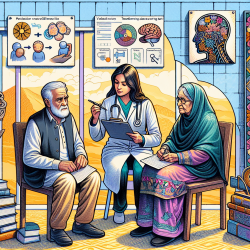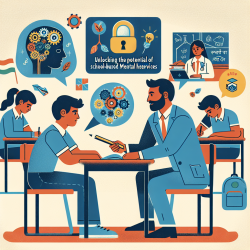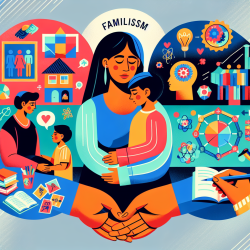Introduction
In today's fast-paced world, the challenges faced by youth are ever-evolving. Among these challenges is the reality of substance use, which remains prevalent among young people. As educators and practitioners, it is crucial to equip youth with the knowledge and tools they need to make informed decisions about substance use. This blog post explores the findings from the research article "Lower-risk substance use guidelines accessible by youth" and offers insights on how practitioners can implement these guidelines to support youth effectively.
Understanding Lower-risk Substance Use Guidelines (LRSUGs)
LRSUGs are evidence-based strategies designed to reduce the harms associated with substance use. These guidelines provide practical recommendations on dosing, frequency, and timing of substance use, empowering individuals to make safer choices. The study highlighted in the research article aimed to identify LRSUGs accessible to youth and to characterize the recommendations within these guidelines. The ultimate goal was to identify gaps and inform researchers and policymakers about the health information available to youth.
Key Findings from the Research
- 130 LRSUGs were identified, with a focus on alcohol, cannabis, and caffeine.
- Only 16% of the guidelines were youth-specific, highlighting a need for more tailored resources.
- Most guidelines were published by health organizations and third-sector groups.
- Less than half of the guidelines cited evidence to support their recommendations.
Implementing LRSUGs in Practice
As practitioners, it is essential to bridge the gap between research and practice. Here are some strategies to implement LRSUGs effectively:
- Tailor Guidelines for Youth: Develop youth-specific LRSUGs that consider the unique needs and circumstances of young people. Engage youth in the development process to ensure the guidelines are relevant and relatable.
- Promote Evidence-based Information: Ensure that the guidelines you share with youth are supported by scientific evidence. This builds trust and credibility, making it more likely that youth will follow the recommendations.
- Utilize Digital Platforms: Leverage digital platforms to disseminate LRSUGs. Social media, webinars, and online resources can reach a wider audience and provide youth with easy access to information.
- Engage in Continuous Education: Stay informed about the latest research and updates in substance use guidelines. Attend conferences, webinars, and workshops to enhance your knowledge and skills.
Encouraging Further Research
While the current LRSUGs provide a foundation for harm reduction, there is still much work to be done. Encourage further research in the following areas:
- Developing Comprehensive Youth-specific Guidelines: More research is needed to create comprehensive guidelines that address the diverse needs of youth.
- Exploring the Impact of Digital Platforms: Investigate how digital platforms can be used effectively to disseminate LRSUGs and engage youth in meaningful ways.
- Evaluating the Effectiveness of LRSUGs: Conduct studies to assess the impact of LRSUGs on youth behavior and health outcomes.
Conclusion
Empowering youth with the knowledge and tools to navigate substance use safely is a collective responsibility. By implementing evidence-based LRSUGs and encouraging further research, practitioners can play a pivotal role in supporting youth to make informed decisions. Together, we can create a safer and healthier environment for the next generation.
To read the original research paper, please follow this link: Lower-risk substance use guidelines accessible by youth.










